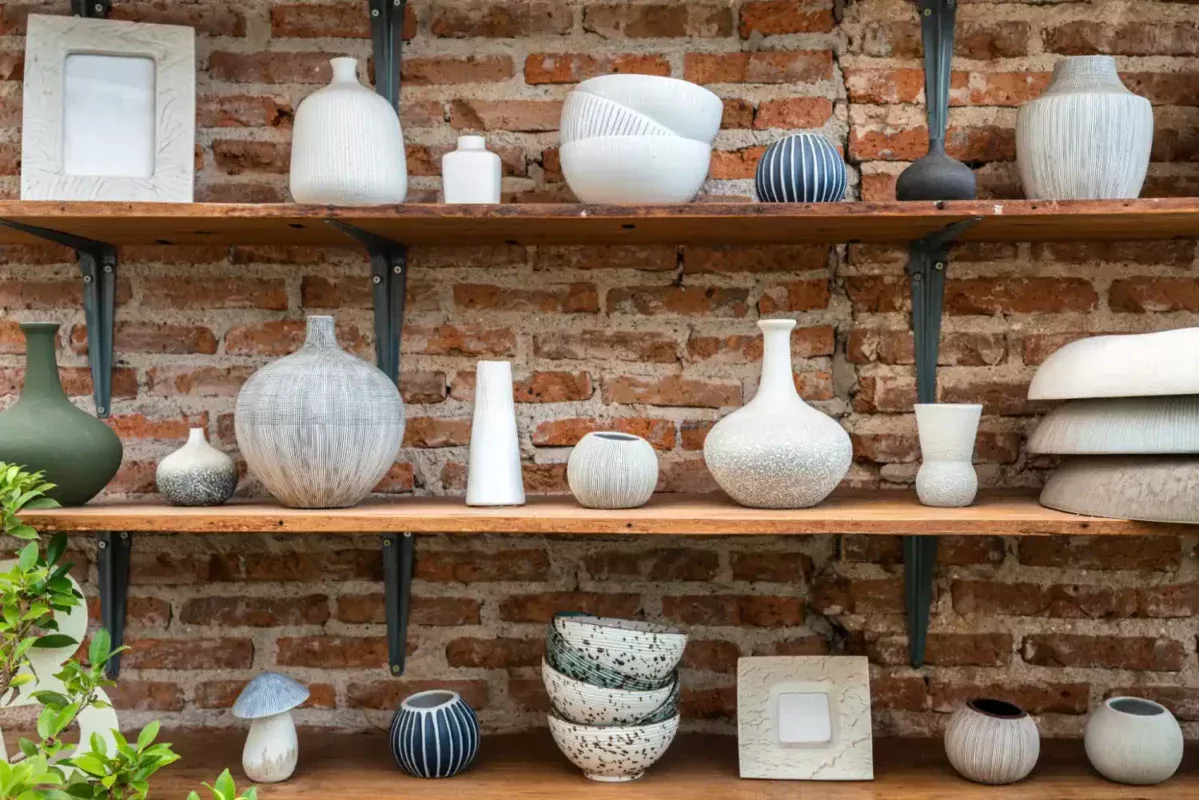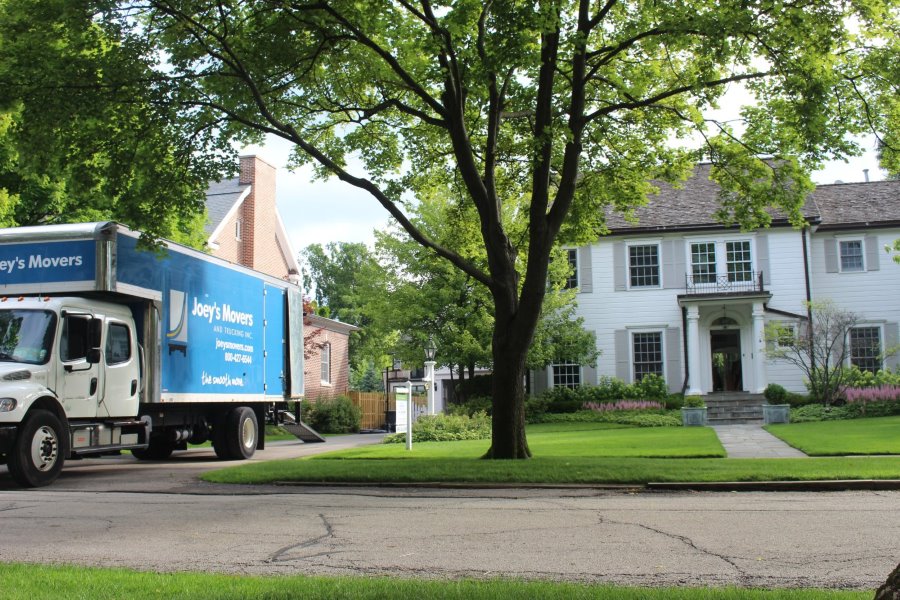There are plenty of exciting aspects to moving into a new home, but the thought of packing fragile dishes isn’t one — in fact, it often brings anxiety. There’s a right way and a wrong way to handle this much-dreaded task, and learning the right way to pack for a move will make a big difference in both your level of stress and your cherished dinnerware arriving intact at your new destination. If you’re wondering how to pack dishes for moving… you’re in the right place!
At Joey’s Movers, we want to help you protect your valuable dishes during your move. We’ve helped thousands of families relocate their kitchen and dining room items safely, and we’re delighted to share our professional expertise on how to pack everything from plates and dishes to glassware and fine china.
Essential Packing Materials: The Foundation of Safe Moving
Before diving into the packing process, you need to gather the right materials. Professional movers are judged on whether clients’ items arrive safely, and the best rely on specific, proven supplies that provide maximum protection, and we recommend that you do the same. Our top choices for professional-grade materials, as well as eco-friendly alternatives, include:
Professional-Grade Materials
– Dish packs and sturdy boxes that are double-walled for extra strength
– White packing paper (ink-free to prevent stains)
– Bubble wrap for more fragile items
– Strong packing tape
– Permanent markers
– Cell dividers for stemware
– Cushioning materials
Eco-Friendly Alternatives
– Biodegradable packing peanuts
– Recycled paper for wrapping
– Household items like clean towels and linens for wrapping
– Reusable cloth wrapping materials
The Ultimate Guide to Packing Dishes
Prepare Your Packing Station
After collecting your packing supplies, it’s time to prepare your packing station. Dedicate a low-traffic area in your home that has plenty of floor space and set up a table that provides a clean, flat, stable workspace. Then, follow these initial steps so you have everything ready.
- Reinforce the bottoms of each of your moving boxes using extra tape applied in an “H” pattern
- Create a 2-inch layer of cushioning at the bottom of each box
- Keep your packing materials organized and within reach and your workspace free of unnecessary items
How to Pack Plates
Knowing how to pack plates properly is fundamental to preventing breakage:
- Choose 3-4 same-sized plates to wrap at the same time
- Place a sheet of packing paper between each plate
- Wrap the stack with 2-3 sheets of paper
- Place plates vertically (like records) in the box
- Add cushioning between each wrapped stack
Pro Tip: Vertical packing distributes pressure evenly and reduces the risk of breaking
How to Pack Bowls
Nesting bowls require special attention to keep them from becoming wedged together:
- Wrap each bowl individually
- Create paper cushioning between nested bowls
- Wrap the nested set as a unit
- Place larger, heavier bowls at the bottom of the box
- Fill gaps in the box with crumpled paper
How to Pack Glasses and Stemware
Fragile glassware demands extra care. The best way to pack glasses for moving is to use this proven method:
- Stuff the interior of each glass with crumpled paper
- Wrap the stem of each glass individually with extra paper or bubble wrap
- Wrap the entire glass with packing paper
- Use cell dividers that separate glasses for extra protection
- Place glasses upright, never on their sides
How to Pack Mugs
Mugs may be sturdy, but they still need proper protection:
- Stuff mugs with paper
- Wrap each mug handle with extra paper or bubble wrap
- Wrap each mug with packing paper
- Stack wrapped mugs horizontally
- Use dish pack dividers for extra security
Filling Your Packing Boxes
One of the most critical aspects of protecting dishes for a move is to follow proper box-filling protocol:
- Place the heaviest items in the box at the bottom and the lightest items at the top
- Create distinct layers with cushioning between each one
- Fill all vertical spaces with crumpled paper
- Test for movement by gently shaking the box
- Ensure no gaps remain where items could shift
- Add extra cushioning at the top before closing
- Don’t overload a box. The weight should be manageable.
Professional Tip: A properly packed box should feel solid when gently shaken, with no shifting or movement of contents inside.
Sealing and Labeling Boxes
Proper sealing and labeling are the final keys to ensuring both safe transport and easy unpacking:
- Create a detailed inventory list of each box’s contents
- Seal all box seams with high-quality packing tape
- Use the “H-method” for tape application:
- Seal the center seam
- Seal both end seams
- Add perpendicular strips for reinforcement
- Using a thick marker, label each box with:
- Contents (e.g., “Kitchen – Everyday Plates”)
- Room destination
- Write “FRAGILE” on all sides and the top of the box
- Add directional arrows pointing upward on all four sides
- After all the boxes are packed, number each one reflecting the total box count (e.g., “Box 3 of 12”)
- Take photos of labels for reference
Pro Tip: Use a different colored marker for each room to make unpacking more efficient.
Common Packing Mistakes to Avoid
Overloading Boxes
Overloading your packing boxes increases the chance of box failure and item breakage. To avoid this mistake, do the following:
– Keep your box weight under 40 pounds
– Use multiple boxes instead of overfilling
– Test box weight by lifting before sealing
Insufficient Cushioning
Skimping on your cushioning material risks chips and cracks during transit. Make sure you have plenty on hand, and if you run out, go get more.
– Always include at least two inches of cushioning on all sides
– Fill all void spaces with packing material
– Never leave room at the top of a box for items to shift
Environmental Impact and Sustainable Solutions
Traditional packing materials can have a significant environmental impact. Consider these statistics:
– Bubble wrap takes up to 1,000 years to decompose
– Packaging peanuts are made from expanded Styrofoam, which isn’t biodegradable and can take hundreds of years to break down.
The good news is that you can significantly reduce the carbon footprint of your move while still securing your breakables by using eco-friendly, sustainable materials for wrapping and cushioning. Options include:
– Clean towels and linens can be used for wrapping materials
– Purchase biodegradable packing peanuts and recyclable paper products
– Save and reuse packing materials
Professional Packing Services: When to Consider Expert Help
While learning how to pack dishes for moving is handy information, it doesn’t eliminate the other issue that leads to moving stress: Wrapping and packing dishes represents a significant investment of your time. If you’re overwhelmed by the idea of spending hours emptying and packing up cabinets filled with glassware and dishes, it may be time to consider using a packing service like the one provided by Joey’s Movers.
Hiring professionals to pack and unpack your fragile items offers distinct advantages. Along with significantly reducing the risk of breakage, a professional packer will have insurance coverage for the items they pack, ensuring that if damage does occur, the item can easily be replaced.
Professional movers bring the highest quality packing materials to get the job done, and delegating the packing job to a competent, meticulous service replaces concern about your items’ safety with confidence.
Though a professional packing service typically costs 15-20% of your total moving expense, the investment saves thousands in potential replacement costs for damaged items and in time savings.
Innovative Packing Techniques
The Vertical Advantage
When it’s time to move, your fine china requires special care and attention. We use a vertical packing method that’s been shown to provide significantly less breakage than horizontal packing, as well as better use of space. It also makes the process of unpacking substantially easier and less time-consuming.
Space-Saving Solutions
Remember that items that can be nested should be backed together, and dish pack dividers help protect breakable plates and maximize box space without compromising protection.
Post-Move Unpacking Strategies
Organized Unpacking
- Set up an unpacking station similar to the packing station you started with. Be organized about where you place your packing materials to save on clean-up time.
- Unpack your kitchen boxes first, removing items and unwrapping and inspecting each piece as you unpack.
Damage Documentation
If you discover any damage:
- Photograph the damaged item
- Note the box condition
- Contact your mover immediately
- Save all packing materials
Frequently Asked Questions
**Q: What’s the best way to pack dishes for moving?
A: The most effective method is to wrap items individually, use plenty of cushioning, pack plates vertically, and never overload boxes. Professional-grade materials and proper technique are essential for maximum protection.
**Q: Should I pack dishes vertically or horizontally?
A: Plates and platters should be packed vertically (on edge) to reduce pressure points and prevent breakage. Bowls and cups can be packed horizontally when properly cushioned.
**Q: Is it better to pack dishes in paper or bubble wrap?
A: Packing paper is generally preferred for most dishes as it’s more cost-effective and environmentally friendly. Reserve bubble wrap for extremely fragile items like crystal or antique pieces.
**Q: Should plates be packed on edge or flat?
A: Always pack plates on their edge (vertically). This method provides better shock absorption and reduces the risk of breakage during transport.
Conclusion
Knowing how to pack dishes effectively and safely makes all the difference in a successful relocation. By following these professional guidelines and using the right materials, you can reduce the risk of damage to the things you love.
While you can take on the packing job for yourself, Joey’s Movers offers professional packing services that provide an extra layer of peace of mind.
Contact Joey’s Movers today for a free quote on your move, and ask about our professional packing services. Our experienced team is ready to help protect your valuable items.



